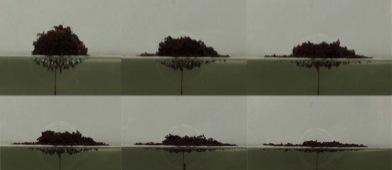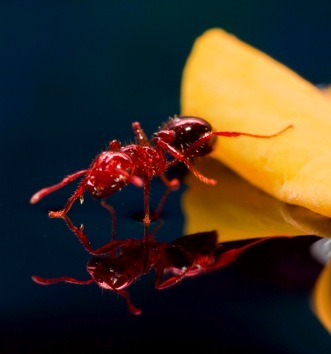
How do ants survive floods?
Fire ants like many species of ants make their homes underground. They are composed of a complex network of passageways and chambers. During floods or heavy rainstorms, these passageways will full up with water and force the ants to evacuate their home. Instead of scattering individually, fire ants (Solenopsis invicta) have the unique ability to gather together as a colony and form rafts on the surface of the rising waters using their own bodies. A layer of ants on the bottom of the raft serves as a base for the rest of the colony to “comfortably” mill around on. Due to the tightly knit “weave” of the ants, water cannot penetrate the raft allowing the ants to stay dry. This water-tight nature provides the raft with the buoyancy force necessary to float. The ants can remain in the raft formation for weeks if necessary or until the floodwaters subside and they are able to establish their colony in a new underground home. Our research provides a look at the details of this rafting behavior as well as a model for our experimental work.


Figure 1: Top view image sequence of an raft with 3,000 ants
Figure 2: Side view image sequence of an raft with 3,000 ants
Movie 1: Top view time lapse of an ant raft composed of about 8,000 ants spreading out on the surface of water. The video is sped up about 15 times. Click here to watch this video on youtube.
Movie 2: Side view view time lapse of an ant raft composed of about 3,000 ants spreading out on the surface of water. The video is sped up about 10 times. Click here to watch this video on youtube.
Movie 3: Panning across an ant raft of about 3,000 ants on the surface of water. This shot shows the undersurface of the raft also. Click here to watch this video on youtube.


Figure 3: Close up of the ant raft interface with the water surface
Figure 4: Close up of a single ant beginning to step out onto the water’s surface. Note the deflection of the water surface. The ant is supported by the surface tension of the water.
